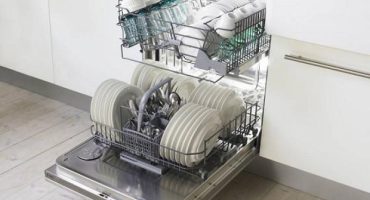- Benefits of Using a Dishwasher
- Types and features of dishwashers
- Selection of own cars
- What is important to know about the installation process
- Preparation of tools and materials for installation
- Mains connection
- Connection to the water supply system
- Installation of a drain hose
- Facade fastening and testing
- Conclusion
A dishwasher is one of the wonders of the 21st century. Those who already use such household appliances respond only positively about it: it saves time and energy, eliminates the unloved by many responsibilities of keeping kitchen utensils clean. Questions are often raised by installing a built-in dishwasher. Is it possible in this case to do without the help of professionals? What are the moments when choosing a dishwasher worth paying attention to? What will be required for work?
Benefits of Using a Dishwasher
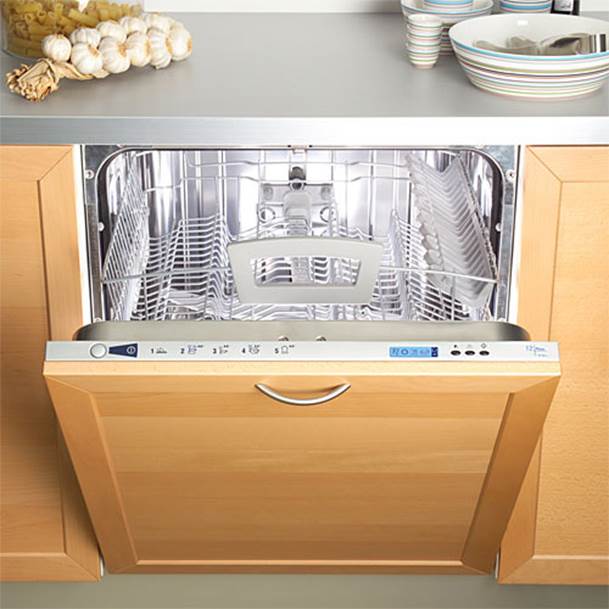
Before you decide and build your dishwasher under the countertop, you should consider the location dishwasher in the country or in an apartment, and you also need to clearly determine whether such household appliances are really needed in the household? Leaning homeowners answer this question positively. There are reasons for that. Exactly:
- using the unit saves water. The machine reasonably consumes liquid (as well as detergent). It has been experimentally proved that a conventional manual dishwashing in a sink spends 3 times more water than an automatic one;
- the dishwasher not only cleans, but also disinfects the surface of products by the action of liquid and steam of very high temperature - more than 90 degrees Celsius. Under normal conditions, it is difficult to achieve this - the liquid will have to be boiled on a stove or in a kettle, then doused with kitchen utensils, at the risk of burning hands;
- the device consumes a minimum amount of electrical energy - for the entire washing as much as an electric kettle for one heating;
- there is an opportunity to choose the desired mode - long or very fast “wash”;
- while the machine is working, households go about their business - now they don’t need to swear about who is washing the dishes. The family is at peace.
Types and features of dishwashers
To integrate a dishwasher, it is the built-in appliances that are needed. In general, all dishwashers in the world are divided into:
- tabletop;
- recessed;
- separate.
The first ones are very small and quite compact. They are placed directly on the table or some kind of support. The maximum that is loaded into such: a couple of cups and plates, a few forks and spoons. Large pots, pans, bowls do not fit inside. Units are convenient to use if a person lives alone or his family consists of two people. Otherwise, its use is impractical. Will have to use almost non-stop - this will lead to too rapid wear of the system.
Built-in devices are designed to be hidden inside the kitchen set under the countertop. They have unattractive lateral parts and a facade, more precisely, in no way decorated or finished. After all, technology, in fact, is hidden from view. A wooden or MDF cloth is hung on the door. Thus, thanks to the facade you can hide the dishwashermaking it part of the interior.
Separate units are convenient for a large kitchen, which has enough space for everything you need. This technique has a bright and ergonomic design, it looks stylish, practical to use. In terms of spaciousness, it is not inferior to the built-in one, and definitely wins before the desktop.
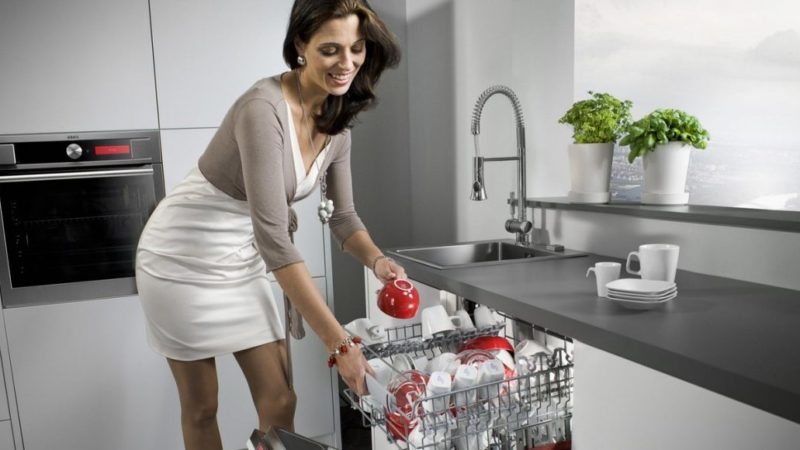
Selection of own cars
How to choose a quality and the best dishwasher, what to focus on? This problem must be solved before you even build a new dishwasher in the finished and finished kitchen. First of all, it is important to pay attention to the location of the unit, where and how do you intend to use it:
- if there is not enough space in the kitchen and there is nowhere to integrate appliances, it is better to purchase a desktop system;
- the more people in the family, the more powerful and roomy the car is needed - a good option in this case: from 10 to 20 sets;
- you need to focus on trusted manufacturers - they have already proven themselves, give a guarantee on their products;
- you need to read reviews, listen to acquaintances: what they like, what pros and cons of the dishwasher;
- check with which water dishwasher works: only with cold or hot too. The first option is preferable (the machine itself heats the liquid) - significantly saves water;
- which control is preferable - touch or button - everyone decides for himself. A sensor usually costs more.
- freestanding cars sometimes provide for vertical loading, in other cases - only horizontal.
What is important to know about the installation process
The most difficult process is given: how to install the built-in technique. With desktop or hotel problems usually do not arise - hoses for connecting to the dishwasher most often already connected or included. They need to be taken out, connected to the unit on the one hand and water supply systems, drainage systems on the other. The main thing is that there is a socket nearby. The devices work only from an electric network of 220 volts.
As for the built-in equipment, even before connecting, you need to find the installation location:
- Do not install the dishwasher under an electric hob - this is extremely dangerous for the health and life of people;
- usually the installation of the unit is planned at the stage of creating a kitchen set;
- a place for a typewriter should be slightly larger than the household appliances themselves - at least 5-7 millimeters on the sides and 5 centimeters behind;
- convenient location - in the immediate vicinity of the sink, so as not to pull hoses and wires throughout the room;
- the doors should easily open to the full width provided, otherwise loading the dishes there will be unrealistic.
What the built-in dishwasher itself looks like in general does not matter. From all sides it will be closed, so in this case there is no need to pursue external attractiveness and overpay for it.
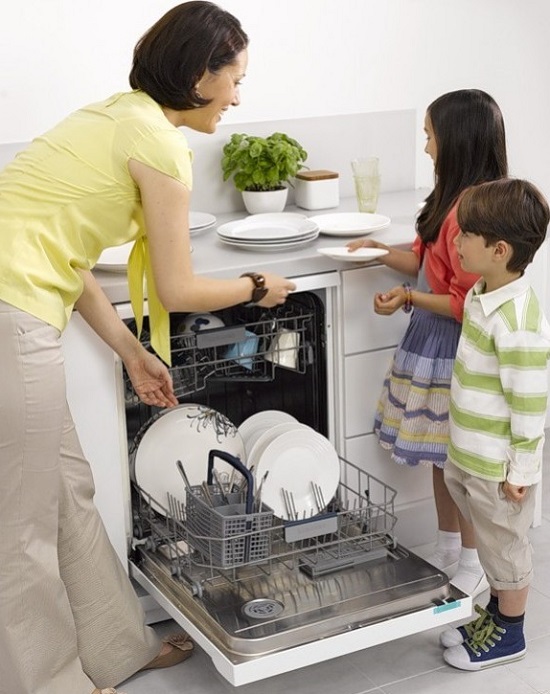
Preparation of tools and materials for installation
The machine was bought and delivered to the house, the kitchen - in anticipation of replenishment. First, it is important to prepare the required materials and tools so that all the most important things are immediately at hand:
- adjustable wrench (need a small one);
- screwdrivers (flat, sacral);
- any roulette (ordinary or laser);
- simple pliers;
- typical punch;
- standard screwdriver;
- chisel;
- European type sockets;
- rosettes;
- copper cable (number of cores - 3);
- differential machine or RCD;
- a simple tee mounted on a pipe made of metal plastic;
- FUM tape;
- a faucet for a hose that will fill the water inside;
- rubber pads;
- double siphon;
- clamps made of plastic.
This is a standard set that is usually used for mounting washing machines, for example. Use only high-quality and certified materials that are licensed and guarantee trouble-free operation. Dishwasher - a complex mechanism. When a failure occurs, it is not easy to repair it. Masters claim that the main percentage of unit failures is precisely due to its incorrect installation.
Mains connection
Even the narrowest dishwasher, as, indeed, any other, work exclusively from electricity. Batteries in this case are not provided.
Connection to the electrical network is as follows:
- you need to check if the sockets in the house are grounded If not, then you need to carry out such a procedure yourself or with the help of an experienced wizard;
- if there is no power supply at the place of installation of the dishwasher, it must be carried out: for this, a container is hollowed out with a puncher for wiring in the wall. Then, a cable is connected to the electrical panel and fixed with a difratom machine or an RCD, a wire is pulled from the unit to the place where the outlet is supposed to be. Next, create a niche for the socket, install it inside and remove the wiring, only then the socket is installed;
- a new outlet should be at least 25-30 centimeters from the floor, but no more - it will be inconvenient to use it to connect the dishwasher;
- modern cars are equipped with a euro plug; it is strictly forbidden to replace it with an ordinary one.
Any work with current is carried out only with a complete blackout in the selected room. To check for current, it is recommended to use an indicator screwdriver - this is the easiest and quickest way to make sure that further work on installing the outlet or laying a new network will be safe.
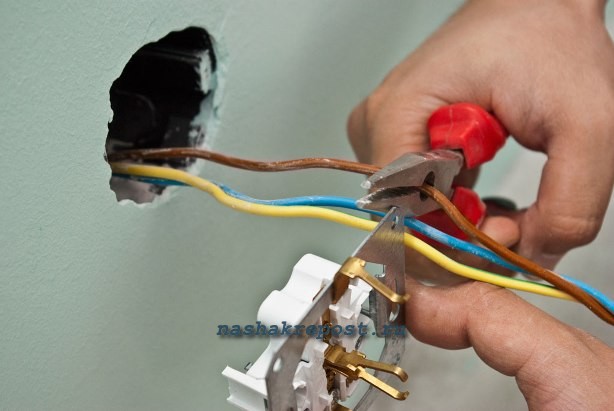
Connection to the water supply system
AND smallest dishwasher, and the largest is necessarily connected to the water supply system. It happens like this:
- A pre-prepared tee is mounted on a cold water pipe, and a faucet is attached. A crane is connected to one of the branches, and a tide hose from the kit is also attached. Please note: sometimes the manufacturer provides pipes of a rigid type. Then be sure to use filters.
- Some craftsmen advise connecting the tide hose to the sink faucet, but when the unit works, it will be impossible to use the faucet. And it doesn’t look too pretty, to say the least. Used as a temporary, but not permanent measure.
- When the tee is attached to the water pipe, there are 2 free branches - one leads to the sink siphon, the second to the fill hose. The diagram is in the figure.

- Mandatory joints are treated with FUM tape for reliability and strength.
Take great responsibility for choosing the tee and the hoses themselves. It is better to choose products more expensive if you are sure that they will last as long as possible. Cheap Chinese units and false savings with their help will come to the home master “sideways” - if the tee or hose burst, flooding can not be avoided.
Installation of a drain hose
All consumed water from the machine flows into the sewer. For this, the unit, as mentioned above, is connected to a siphon. From there the liquid rushes away from the apartment.
It is important that the hose provided for outflow is durable and able to survive the effects of household chemicals. After all, usually the dishes inside are washed with the addition of powder or gel - together with water, the substances go into the sewer. Chemical aggressors corrode the inner cover of the drain hose, so it is worth choosing it carefully.
Facade fastening and testing
After connecting the unit to the mains, water supply and sanitation, the product is rolled up into the recess intended for it. Height is regulated with the help of legs.
After installation, the dishwasher is checked - it is put into operation. Usually nothing is loaded inside, powder is not poured, but they only check: does water come in, does the used liquid go into the sewer.
If everything is normal, then the machine is connected correctly.
The final stage of how to install a dishwasher is to fasten the facade and test the machine after connecting in place.
The fastening of the facades occurs at the places of the door of the equipment, which are specially marked and designed for these purposes. Special screws are selected, they firmly hold the decorative door in place.
Some experts strongly recommend pasting the inner surface of the decorative door with a film that protects the material from exposure to steam and moisture. Otherwise, the product risks swelling quickly and becomes unusable, this is an extra waste for the homeowner. Replacement will fly a pretty penny.
Conclusion
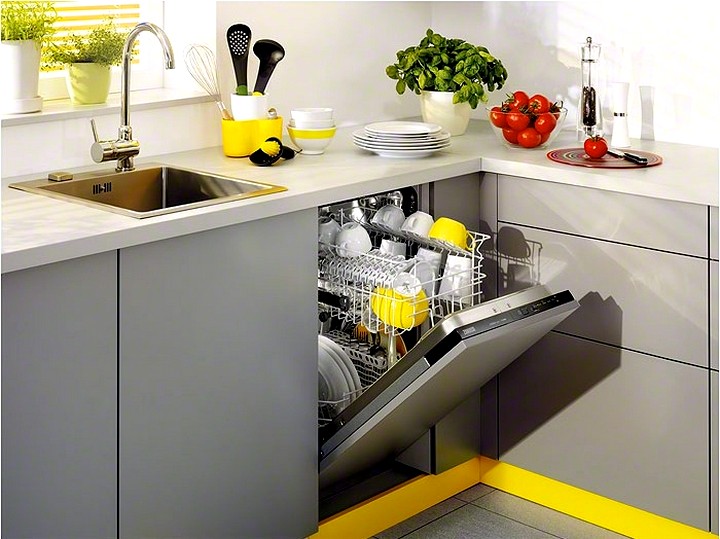
Most built-in dishwashers have standard dimensions: 45 or 60 centimeters wide, about 80 cm high, about 55-60 cm deep. Carefully study the theory before connecting the unit. The system works from an electric network, interacts with water, therefore installation must be competent in order to avoid an emergency when using. You need to use only high-quality materials - even on FUM tape is not worth saving: good components are the key to the smooth operation of the equipment. Self-installation will help save several thousand rubles. After connecting the dishwasher does not work? Contact a professional, probably the installation technology is broken or the unit itself is defective.

